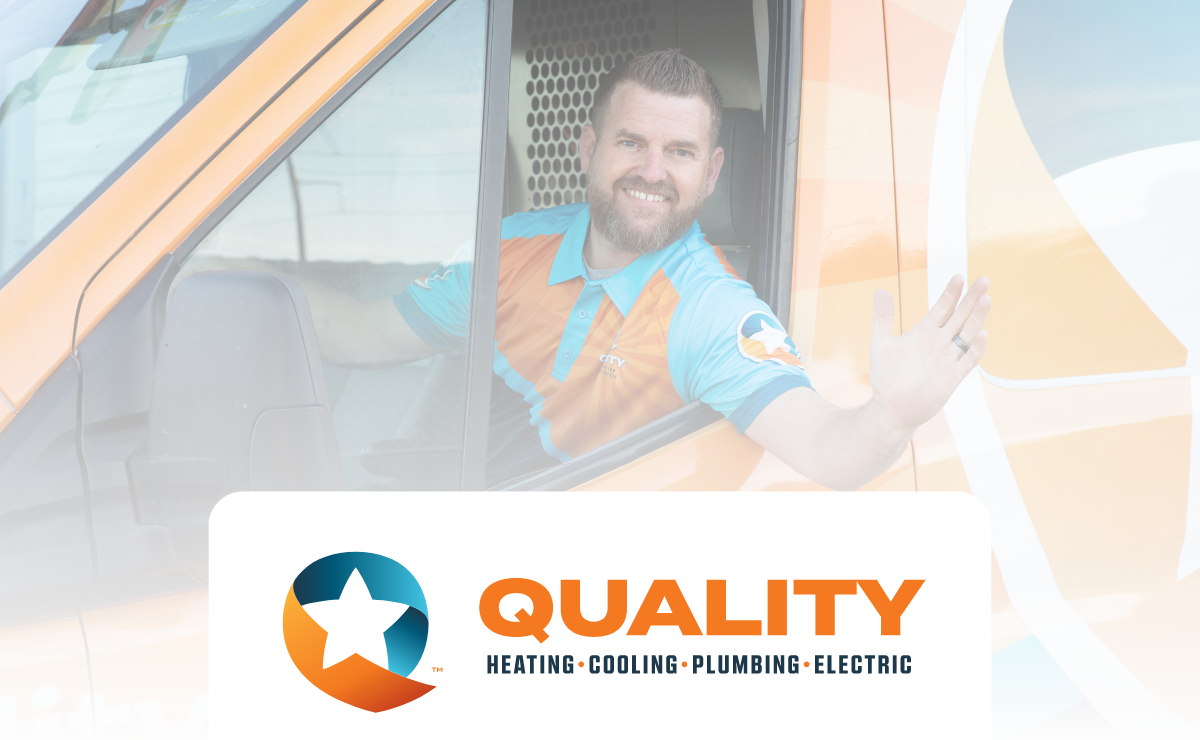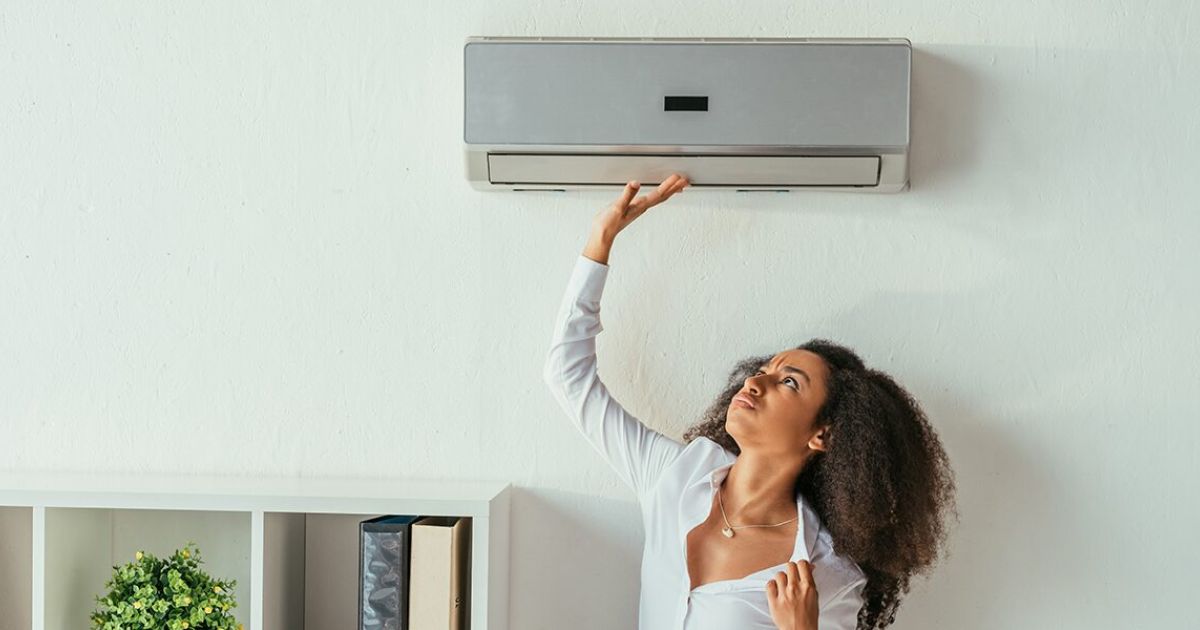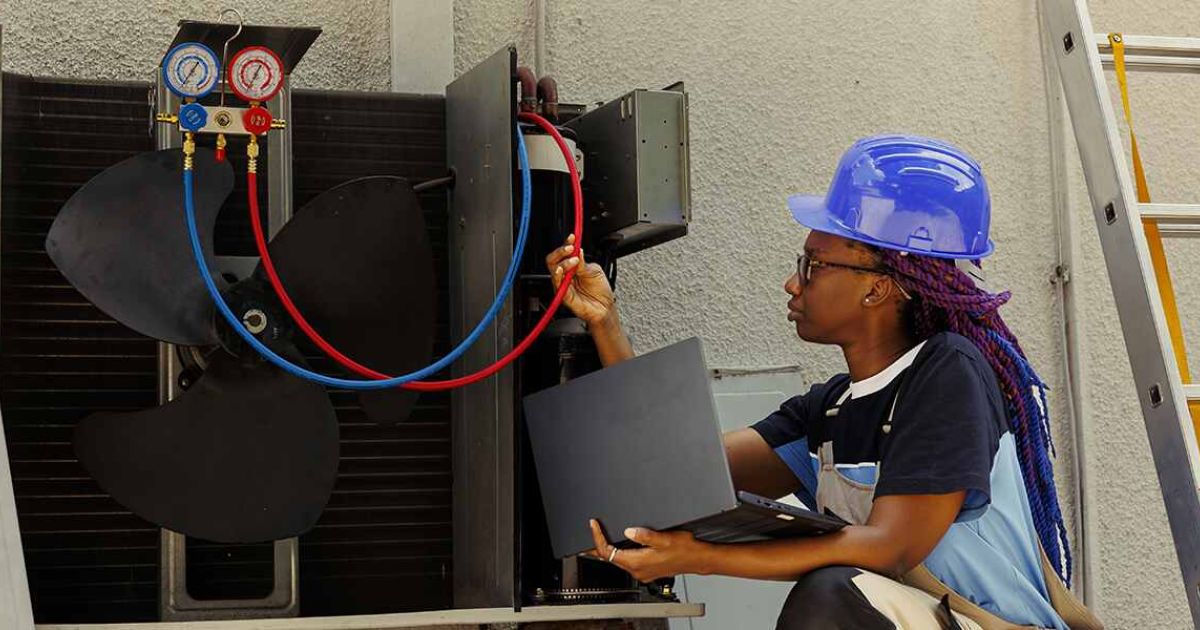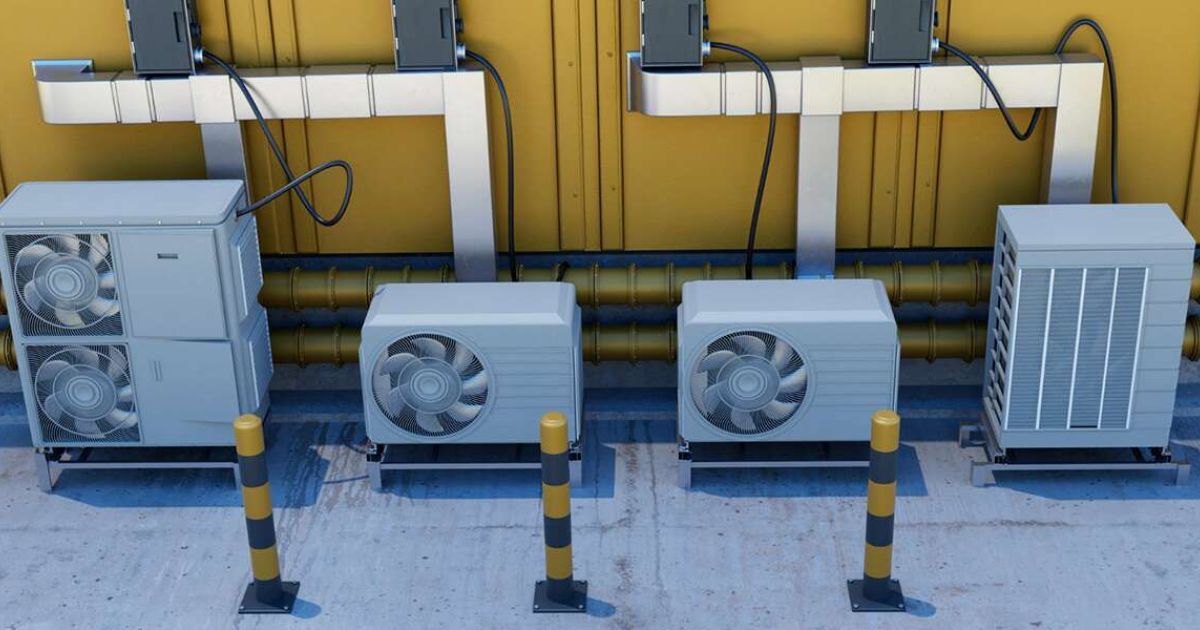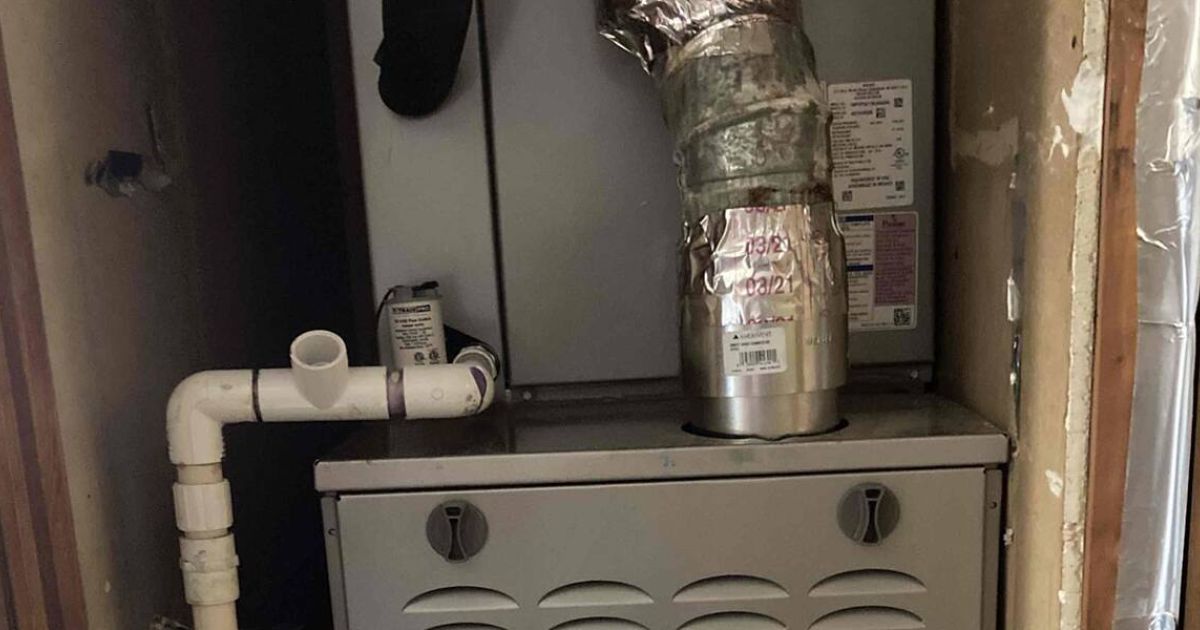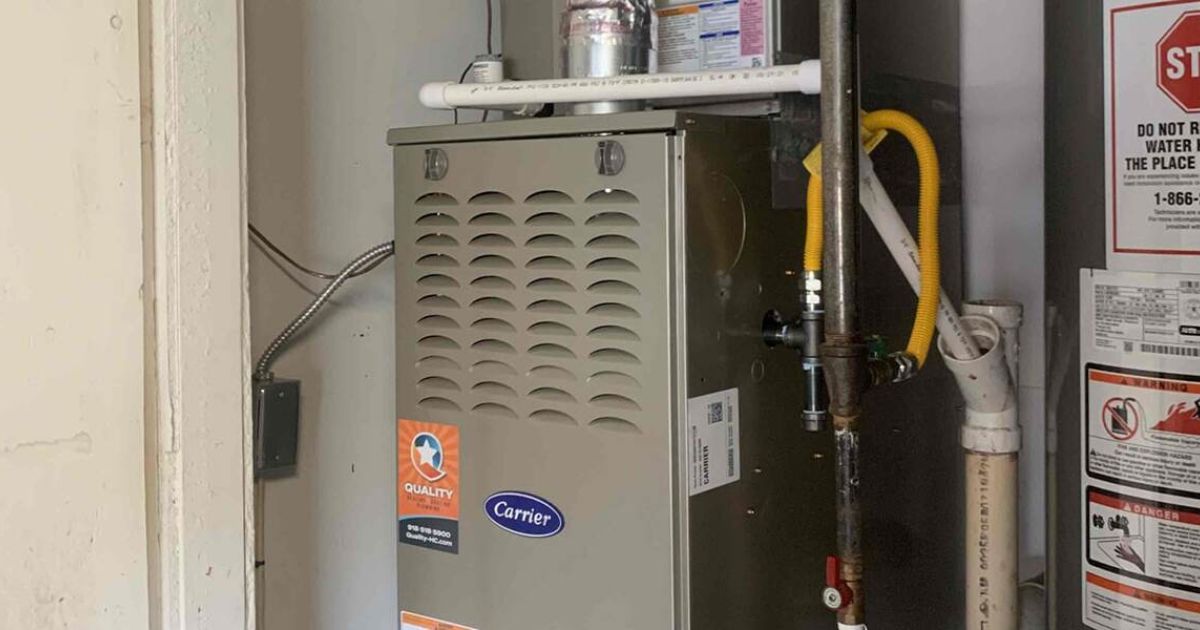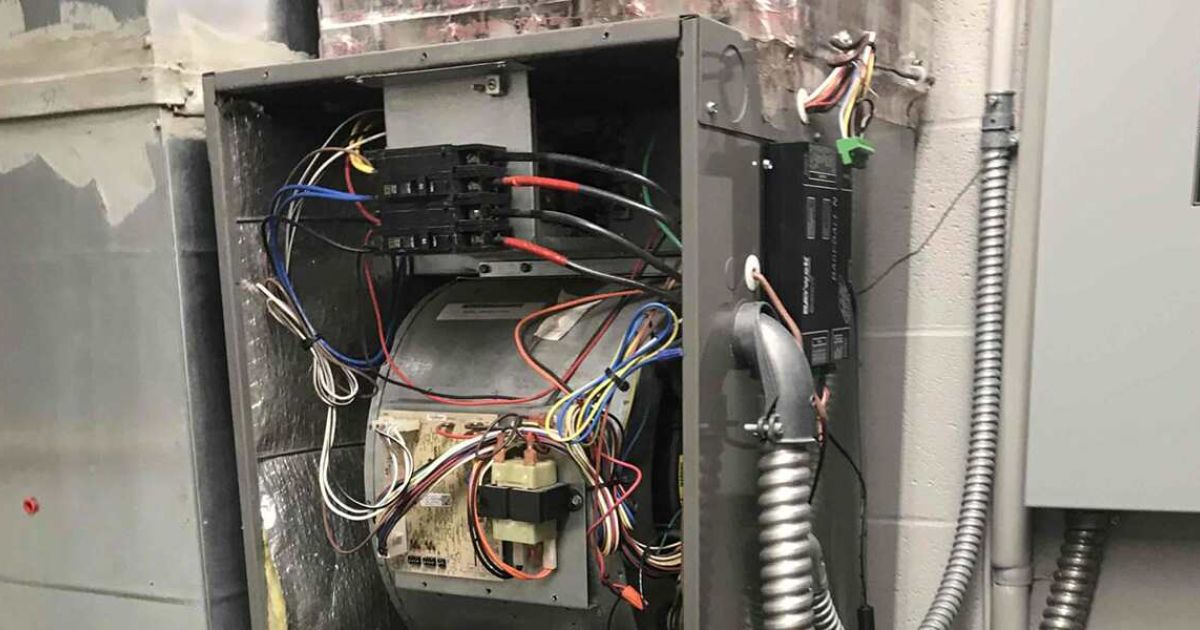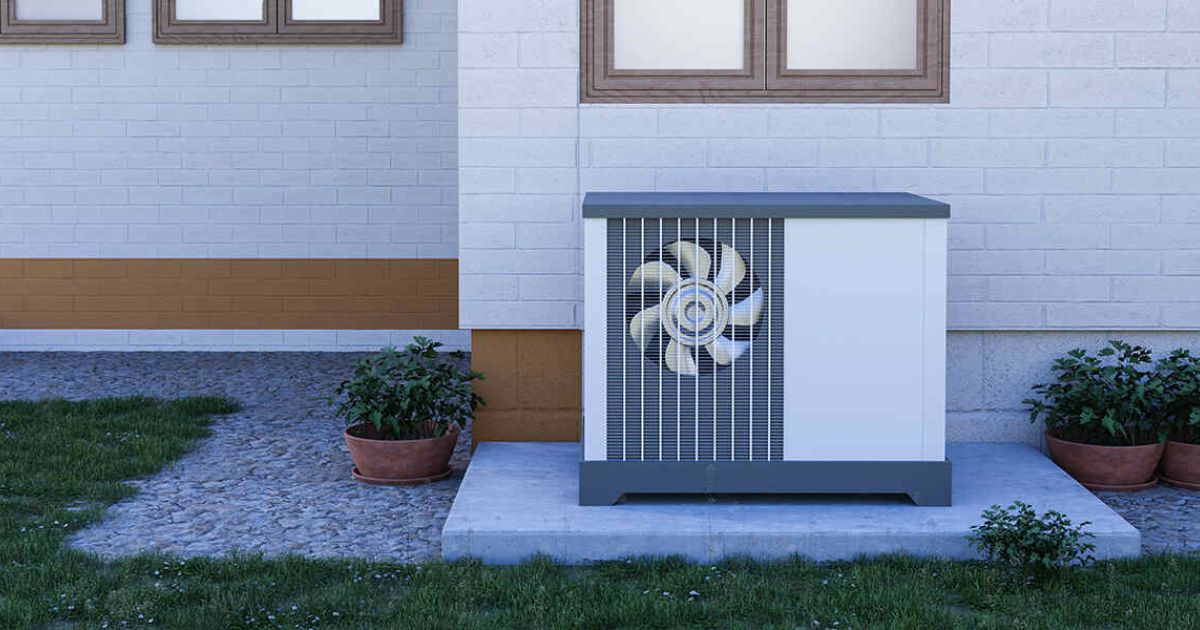
Are you looking for an efficient way to cool your home in the summer? Contact Quality Heating, Cooling & Plumbing for a heat pump installation consultation.
For many people, staying cool in the summer requires help from an air conditioner or heat pump. Unfortunately, the term “heat pump” causes people to assume that this type of HVAC equipment only works for warming houses in the winter, but that’s not the case. So, how does a heat pump work in the summer?
As Tulsa’s professional heating contractor, Quality Heating, Cooling & Plumbing knows that AC cooling in the summer isn’t the only way to beat the heat. Learn more about heat pumps and how your household can benefit from one during the summertime.
How Do Heat Pumps Work?
Before you can learn the answer to “How does a heat pump work in the summer,” it helps to understand the equipment as a whole. Heat pumps refer to a type of air conditioner that can work in reverse. HVAC contractors install the unit inside and outside a property, like a central air conditioner’s condenser unit and air handler.
During the winter, the heat pump draws in heat from the chilly air outdoors and brings it indoors to warm the house. In the summer, you can reverse the settings from “heat” to “cool.” By making that adjustment, the equipment will reverse its actions and pull heat from indoor air and transfer it outside, leaving the home feeling cooler.
Heat pumps run on electricity and function as both a heating and cooling unit. With it, you won’t have to install a separate air conditioner or furnace.
How Can a Heat Pump Cool Homes in the Summer?
Unlike furnaces and boilers, heat pumps don’t generate heat. Instead, they transfer heat from one place to another by using a refrigerant to absorb heat. Even in cold temperatures, these units can pull warmth from the air. When in its “cool” setting, a heat pump will operate exactly like an air conditioner by removing hot air from indoor spaces.
The indoor portion of a heat pump has an evaporator coil, while the outdoor section contains a condenser coil. Copper lines with refrigerant connect both components.
As air circulates over the evaporator coil, the refrigerant absorbs the air’s heat and transfers it to the condenser coil. A fan inside the condenser unit blows air over the condenser coil to disperse the warmth outdoors. The refrigerant will continue cycling through both coils and change from liquid to gas until the home reaches the desired temperature on the thermostat.
What Are the Most Common Types of Heat Pumps?
You could install one of two types of heat pumps: an air source or a ground source. Air-source heat pumps are the most common because they transfer heat between indoor and outdoor spaces by absorbing heat from the air.
Geothermal heat pumps represent the ground source options. With this equipment, the heat transfers between the ground outdoors and a building’s indoor air. It can be costly to install a geothermal heat pump, but they offer efficient ways to keep your home comfortable throughout the year.
Why Use a Heat Pump Instead of an Air Conditioner?
Heat pumps and air conditioners don’t only work similarly. They also resemble each other in appearance. Besides knowing that a heat pump can keep your home cool and warm, you might wonder what else sets both HVAC systems apart and why anyone would prefer to use a heat pump to battle the summer heat.
Consider some of the top benefits of using a heat pump for indoor temperature control.
Dehumidification
Heat isn’t the only problem people deal with during the summer. Humidity can also make indoor spaces feel stuffy and unpleasant. Yet heat pumps remove heat and moisture from the indoor air, which keeps a building’s humidity levels from getting too high.
Convenience
Instead of relying on two separate HVAC systems for year-round comfort, you can use a heat pump. Because of its ability to reverse the flow of refrigerant between its indoor and outdoor units, you won’t have to worry about maintaining multiple units unless you live in an area with winter temperatures that regularly fall below freezing.
In that case, you’d need a backup electric or gas furnace to switch on to battle the cold on frigid days. Heat pumps won’t work in temperatures below freezing. Still, the hybrid system does wonders in maintaining consistent temperatures for as long as you require, especially during the summer.
Energy Efficiency
The more energy efficient a cooling system is, the less energy it requires to keep a property’s interior cool and comfortable. Less energy consumption equals lower monthly utility costs. Because a heat pump generally requires less electricity than a typical air conditioner, the heat pump makes a more energy-efficient option.
Tips for Using a Heat Pump To Cool Your Home
Besides asking, “How does a heat pump work in the summer,” people unfamiliar with this equipment may also inquire about the best ways to use them during the year’s hottest months. Following the best practices for using a heat pump in the summer will keep your home comfortable without causing your energy bills to skyrocket.
Enjoy the energy efficiency and convenience of a heat pump by following these summertime tips.
Don’t Use the “Auto” Function
Heat pumps have a sensor that gauges outdoor temperatures. If you keep your system in its “auto” mode, it will use that sensor to switch from heating to cooling automatically, depending on the outdoor temperature. Though the auto function provides the ultimate convenience, it could cost you more money than expected.
If you have a heat pump, you’ll likely run it throughout the year to keep your home cozy. However, as seasons change, temperatures can fluctuate wildly each day from morning to night, causing your heat pump to run constantly. Consider turning off the auto function and manually adjusting your heat pump’s cooling mode when you know your home no longer needs a heater.
Maintain Consistent Temperature Settings on the Thermostat
Heat pumps do an excellent job of maintaining temperatures according to the thermostat’s settings. Though it’s reasonable to adjust the thermostat throughout the day to help a traditional air conditioner run more efficiently, frequent adjustments create the opposite effect with a heat pump.
The more you adjust a heat pump’s temperature settings, the harder the system will work. Overworking the equipment reduces its efficiency, which could lead to higher electricity costs and premature wear on the unit’s components.
Schedule Routine Heat Pump Maintenance
Regardless of which heating and cooling system your home uses, it will need regular maintenance to ensure it runs smoothly every summer and winter. Annual maintenance from a qualified HVAC contractor for heat pumps includes:
- A thorough inspection of all its components
- An air filter change
- Deep cleaning of the system’s inside and outside units
- Repairs for minor and major damage
Trust Quality Heating, Cooling & Plumbing for Your Cooling Needs
Quality Heating, Cooling & Plumbing is a top-rated HVAC and plumbing company proudly serving Tulsa, OK, and other local communities. Our business’s skilled technicians know how to deliver results while going the extra mile to ensure each customer receives the best outcome for their heating and cooling needs. We offer everything from heating maintenance to air conditioning repair. If you want to install a new cooling system now that you know the answer to “How does a heat pump work in the summer,” call Quality Heating, Cooling, & Plumbing today at 918-393-4204 for an appointment.

Cassie Pound is the Vice President of Quality Heating, Cooling, Plumbing & Electric with locations in Tulsa, Glenpool, and Bartlesville, Oklahoma.

